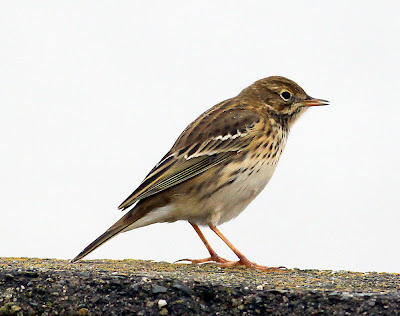Regular blog readers may remember the Little Owl on the garden fence at daughter Joanne’s home.
The owl still makes regular but unpredictable appearances except on the two or three occasions a week Sue and I go round to let Holly the black labrador outside for her essential requirements. I’ve still to get my 400mm properly trained onto the elusive owl, with the best garden bird I could manage a Mallard.
So Joanne borrowed my old Canon and bog standard 300mm lens then took some photographs. The owl seems to be a juvenile of the year judging by the eye colour and hint of downy feathers still visible on its breast.
Looks like Joanne doesn’t need any photography lessons from Dad?
Little Owl
Little Owl
Mallard
I was out Conder Green way this morning where the most obvious change was the increase in numbers of Little Egrets to nine birds now that their breeding season is over. Two were feeding in the roadside creek when a loose party of seven arrived from the north to drop into the area of the pool. The birds fed for a while before scattering off in various directions and over towards the Lancaster canal which is located just over the back of the pool.
Little Egret
Two Grey Herons were about the creeks and the pool, one lording it over the marsh, stopping to preen and have a good old scratch.
Grey Heron
Grey Heron
No variation with the waders and wildfowl - 1 Little Grebe, 2 Wigeon, 10 Tufted Duck, 12 Shelduck, 55 Redshank, 15 Oystercatcher, 1 Curlew.
The numbers of passerines varies little at the moment with 2 Reed Warbler, 1 Sedge Warbler, 2 Whitethroat and 1 Meadow Pipit still in song from the marsh and hedgerow, together with brief snatches of Chiffchaff from the car park. Otherwise, 1 Great-spotted Woodpecker, 6 Linnet, 2 Tree Sparrow, 1 Greenfinch and more than 1 Robin. I’m pretty sure the juvenile Robin had two legs, but the photo looks like there was just one.
Robin
At Glasson a Great Crested Grebe was new on the water to join with a handful of Coot, Mallard and Tufted Duck. I watched a Lesser Black-Backed Gull have breakfast, a dead fish left behind by the weekend anglers. Some birds just have no table manners do they?
Great Crested Grebe
Lesser Black-backed Gull
Lesser Black-backed Gull
Join Another Bird Blog very soon for more birds, elusive or not.
Linking today with Theresa's Run A Round Ranch .
Linking today with Theresa's Run A Round Ranch .















































































